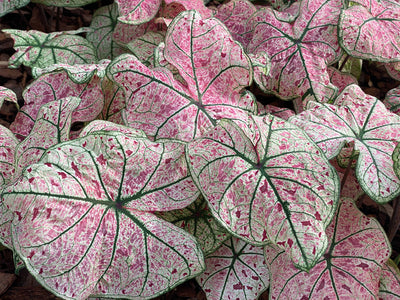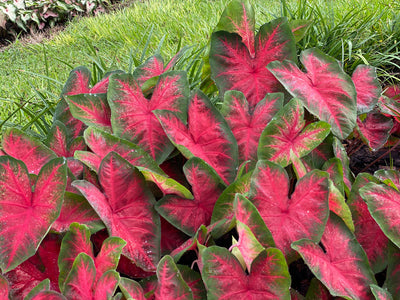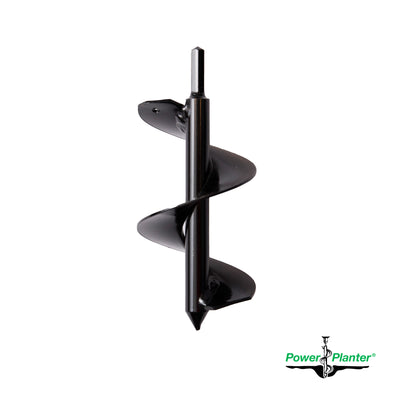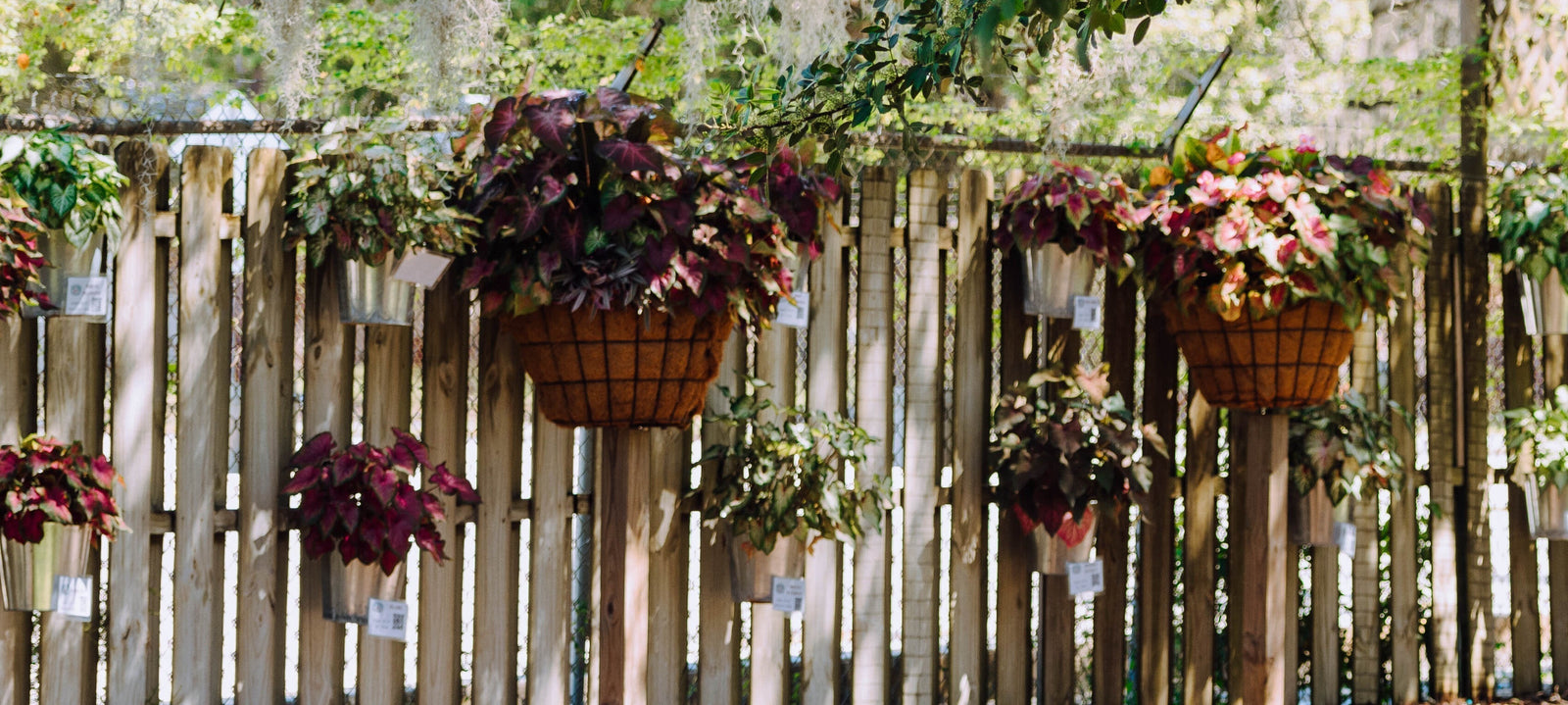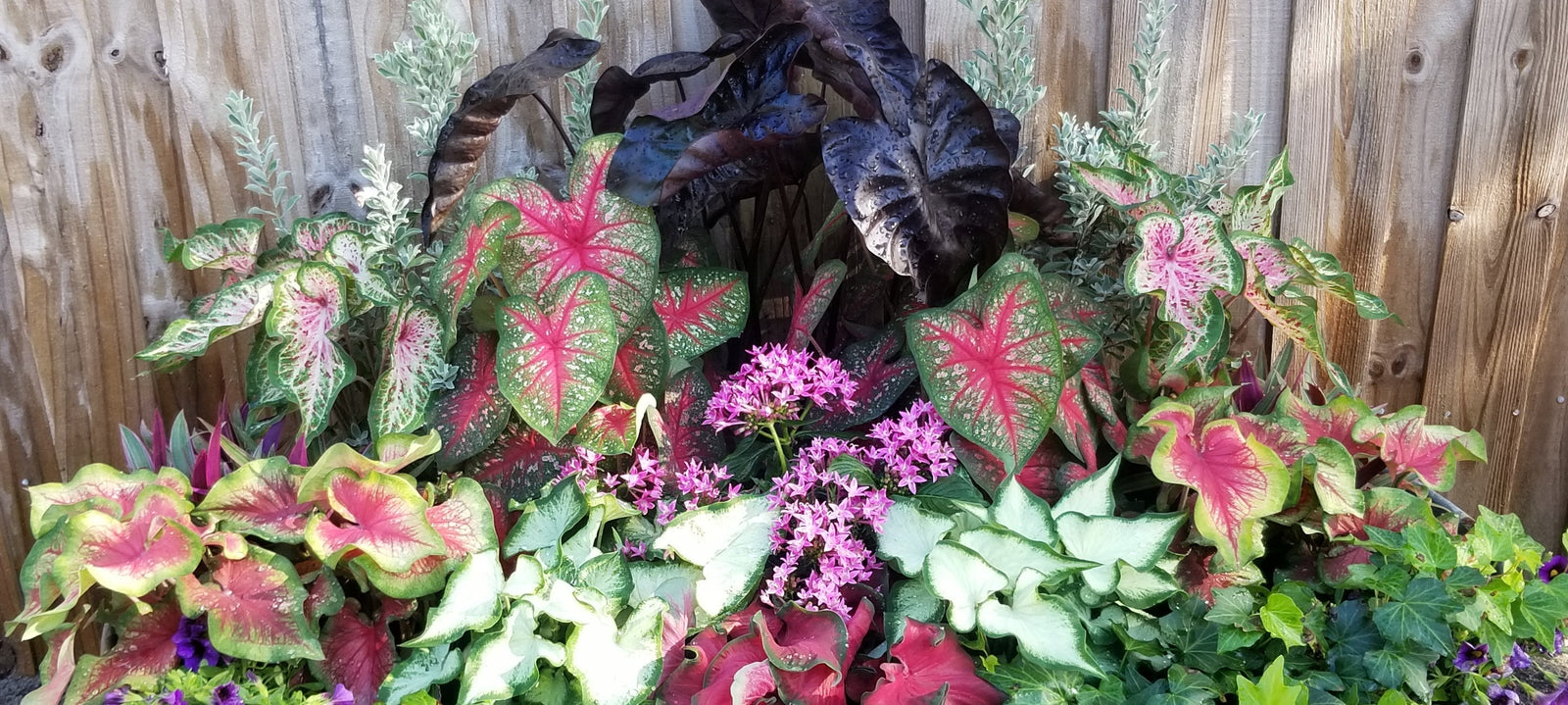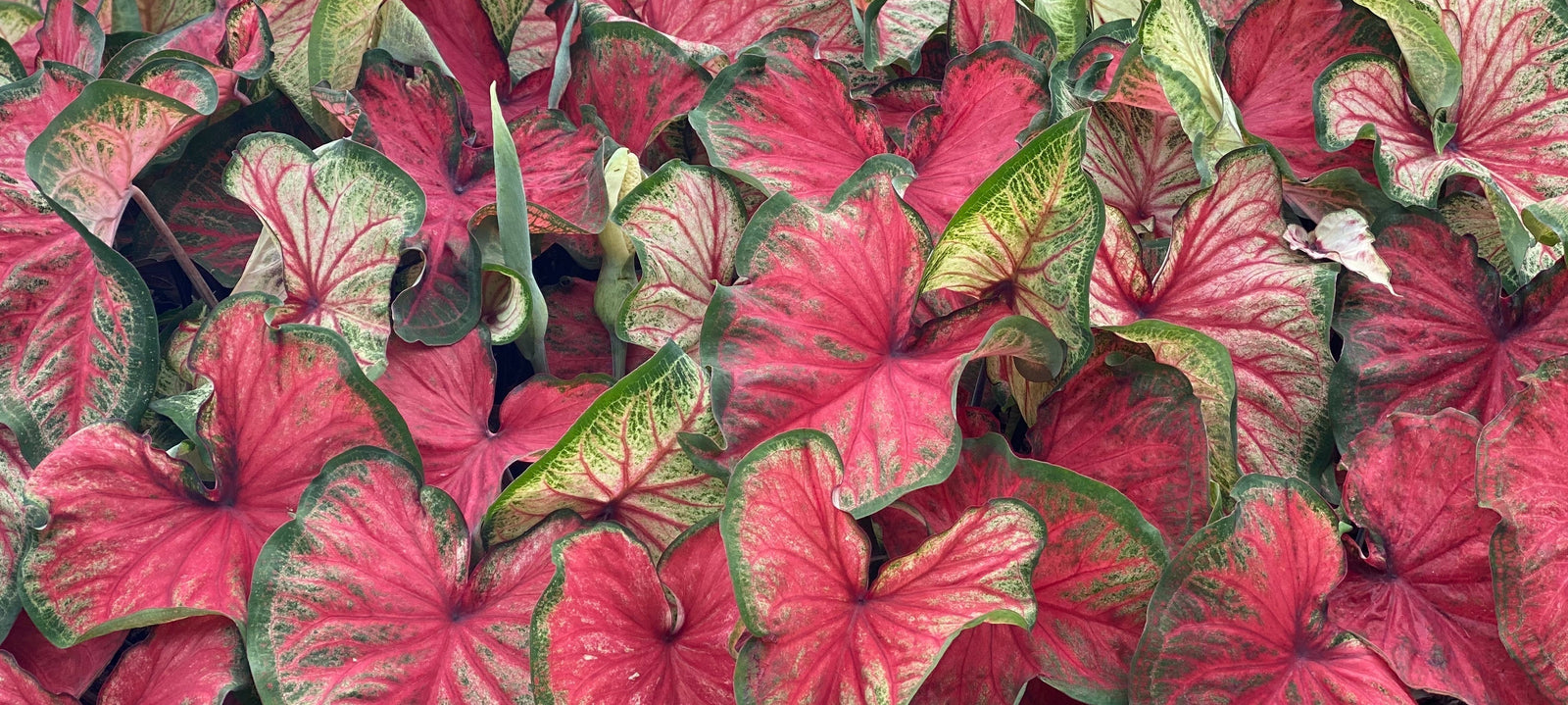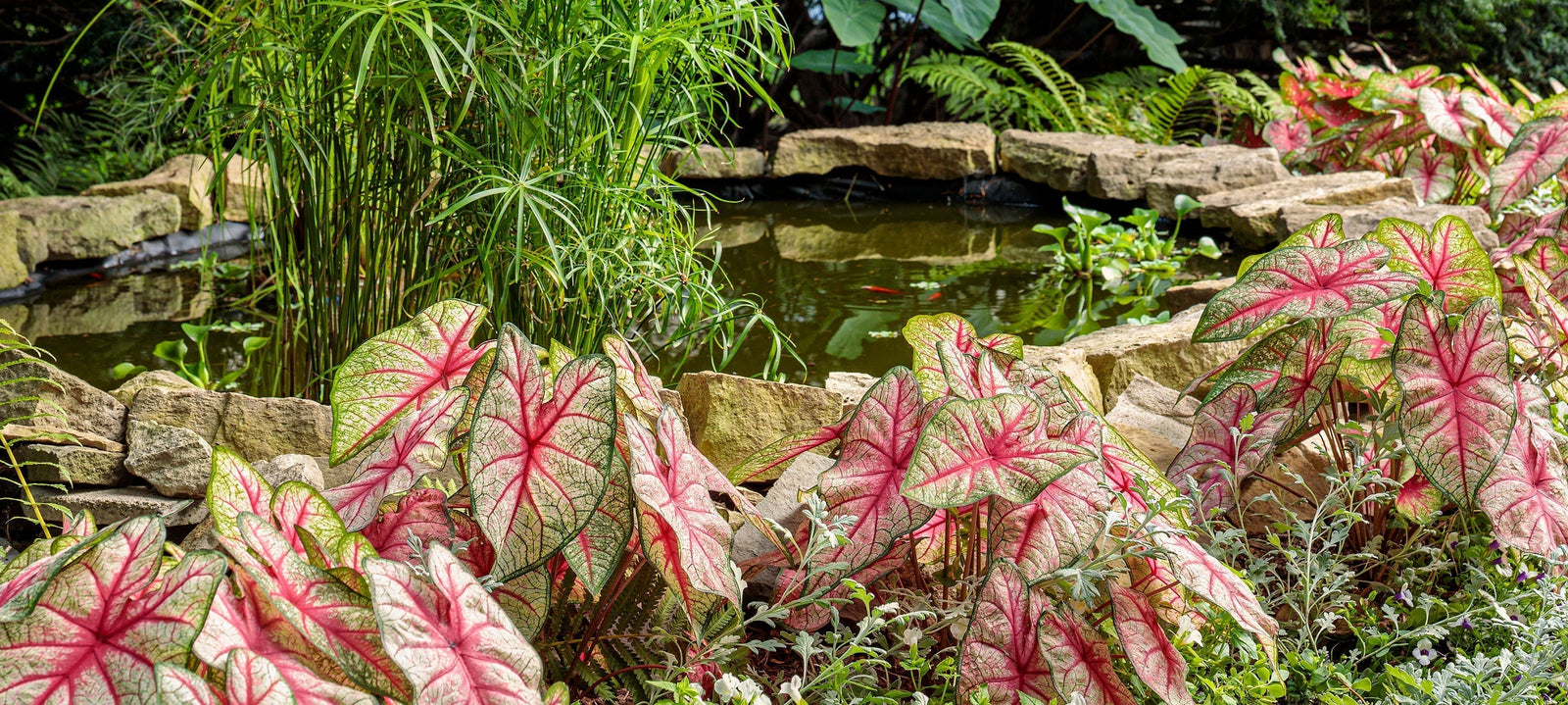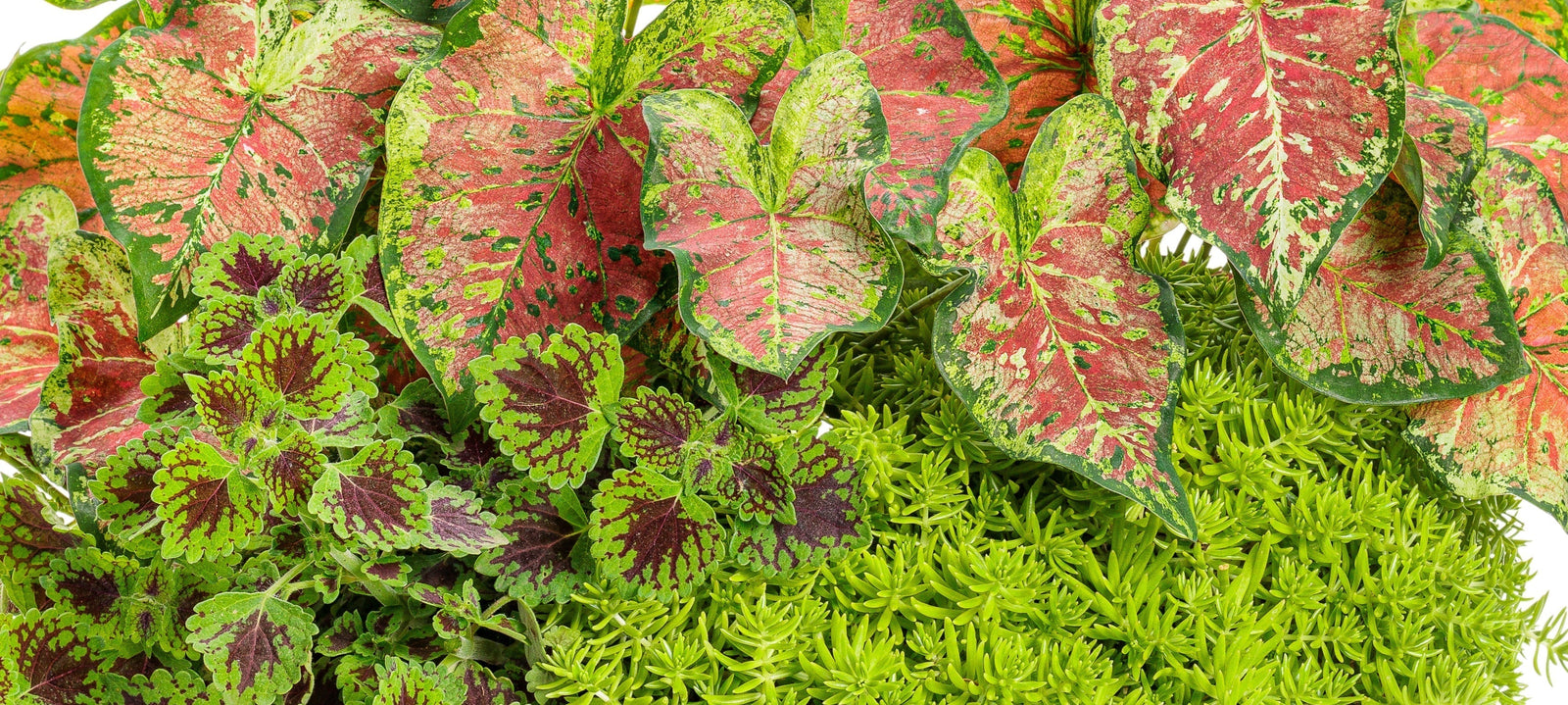Nine Expert Tips to Know When Caring for Caladiums
March 20, 2024
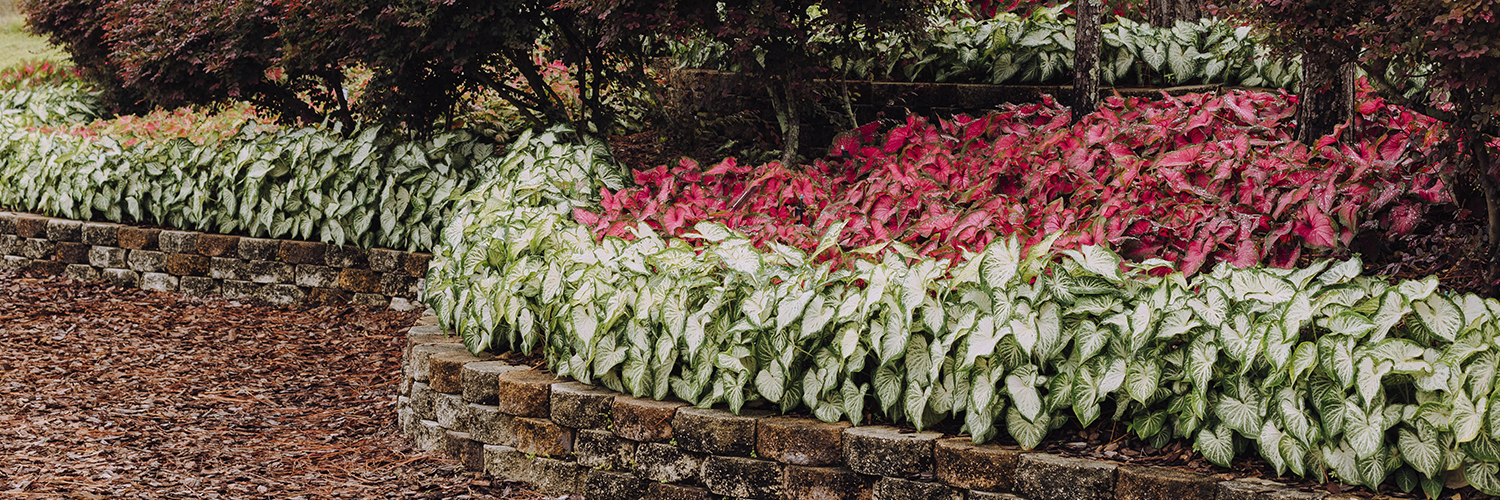
Caladiums are loved for their ability to provide show-stopping color with their brightly patterned leaves ranging from red to white, pink to rust orange, and even maroon to violet framed with green borders. Though largely low maintenance when their preferences are met, there are a few key things it helps to know before beginning to grow caladiums to have the greatest success and enjoyment. Our experts shared their experience below so you don’t have to learn these lessons the hard way.
Caladiums Prefer Consistent Moisture
Caladiums hail from tropical regions and appreciate consistently damp (but not soggy) soil. Allowing containers and garden beds to dry out frequently causes foliage to yellow, brown around the edges, or go dormant. Check soil moisture daily and water whenever the top inch becomes dry.
They Thrive in Filtered Bright Light
While caladiums need some light to fuel growth, direct hot sun can cause leaf burn in many varieties not bred for full sun. These caladiums perform best in part-sun to full-shade exposures, with 4-6 hours of filtered or dappled sunlight daily. And it’s important to know that morning sun is gentler than hot afternoon rays.
Cool Nights Aid Growth
Caladiums relish summer heat during the day followed by cooler 65-75°F nights. These nightly temperature drops spur more vigorous leaf size and color development.
Fertilize Often in Peak Growth
During active growth in summer, caladiums benefit from regular fertilizer to look their best. Apply diluted, balanced, liquid fertilizer every 2-3 weeks while plants are rapidly growing and producing new leaves. Alternatively, a controlled release fertilizer applied at planting can save you time.
Group Plants to Boost Humidity
Native to tropical rainforests, caladiums appreciate humidity levels 50 percent and above. In the landscape, mulch can help preserve moisture and increase humidity. Increase moisture around plants by grouping pots together and placing them on pebble trays filled with water. Their large leaves also release moisture through transpiration.
Shelter from Drying Winds
With our breeding program we are continually introducing new varieties that are environmentally tough. That said, wind exposes caladium foliage to desiccating air movement, which can quickly lead to leaf damage. Locate containers and planting beds in protected microclimates out of breezy spots. Use windbreaks to shield plants when needed.
Old Leaves May be Removed
As lower caladium leaves age and fade during summer, they can be removed by pinching at the base. This neatens their appearance and encourages new leaf production, so plants stay lush all season.
Watch for Pests on Undersides of Leaves
Check caladiums frequently for common pests like aphids, mealybugs, spider mites, and thrips, which can congregate on the undersides of leaves. Treat infestations early before they damage plants to save yourself from far more work later.
They Work Well When Mixed with Other Plants
Caladiums pair beautifully with many companion plants that share their preference for shade and moisture. Mix them with elephant ears, ferns, impatiens, begonias, bromeliads and more for a show stopping display.
Following these useful tips and tricks will help ensure success raising impressive caladiums from the start. Their gorgeous leaves will provide enjoyment whether planted in garden beds or containers. With proper care, and with these expert tips, your caladiums will flourish all season long.
Check out our Caladiums



